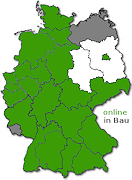Hamnet is the intranet of broadcast amateurs, exclusively based on direct radio rely links (i.e. on simple technology). Hamnet, the Highspeed Amateurradio Multimedia NETwork connects relais- and digirepeater stations in Europe and beyond at a speed between 1MBit/s and 100 MBit/s. It is based on commercial wireless devices using mainly the 6cm band.
Hamnet is an excellent example for one of the primary tenents of amateur radio:
inter-operability without massive coordination.
Hamnet is using the international coordinated IP-address space of the AMPRNet (44.0.0.0/8) (it is interconnected with the international AMPRNet and the Packet Radio World) and Autonomous System (AS) numbers out of the 16-bit and 32-bit private AS number space to interconnect active regions by external Border Gateway Protocol (BGP) routing. It's a digital backbone of broadcasting.
The vision: a huge intranet (P2P) for radio amateurs with end-to-end communication
POST http://image-transporter.apps.allmende.io/image
Hamnet doesn't replace the Internet! It is mostly broadcast based, but supported by TCP/IP wiki ![]() .
.
# Application Examples
basically there are applications for all kinds of services you also have in commercial networks:
- ATV Lifestreaming -> i.e you can watch and broadcast TW
- Social Network - via image or voice, f.i you can hold chats/ phone conferences via mumble, the Open Source chat solution html ![]() - Search Engines
- Web SDR
- Webcams
- Search Engines
- Web SDR
- Webcams
xxxxx

Presence of Hamnet in Germany in 2016. source ![]()
# Where?
HAMNET started in Germany, where it is rapidly growing since 2009.
In 2018 Hamnet covers many regions in Europe and is growing fast beyond its european border, transnational.
for updates see: Hamnet database, map: wiki ![]()
# When did it start?
add year if available + source if possible
# Motivation: Learning & Experimentation -> Building your own Internet: technology you usually don't get in touch with (Routingprotocols, Server-to-Server VPNs, DNS- Hosting, ...) Peering with other groups around the world -> Building your own backhaul -> System Integration of backhaul technology
Add the theories other (historical) practices this governance proposal/practice draws from.
xxxxx
# How does Peer-Governance in the Commons work?
Each radio amateur operator can participate in the network: operators, networkers, sysops, Afu-developer -- but all need to rely on TCP/IP as protocoll layer.
The Network Management – Principles & IP Allocations are:
- Keeping the experimental nature of amateur radio
- Regional network management
- Active regions will get enough resources (IP-
addresses, AS-numbers)
- Active regions will „speak“ eBorder Gateway Protocol wiki ![]() to neighbors
- IP numbers for German regions will be provided by
the German IP coordination team
to neighbors
- IP numbers for German regions will be provided by
the German IP coordination team
Lento pero avanzo
Keep Commoning & Commerce Distinct. There is a rule to prevent people from misusing the amateur radio frequencies for commercial reasons.
z
Bring Diversity into Shared Purpose: ADD TEXT HERE
Create Semi-Permeable Membranes: ADD TEXT HERE
Assure Consent in Decisionmaking: ADD TEXT HERE
Share Knowledge Generously: ADD TEXT HERE
Rely on Herararchy: ADD TEXT HERE
Relationalize Property: ADD TEXT HERE
Honor Transparency in a Sphere of Trust: "Deployment Identification: Radio amateurs need to identify in regular intervals"
Finance Commons Provisioning ADD TEXT HERE
Peer-Monitor & Apply Graduated Sanctions: ADD TEXT HERE
Amateur broadcasting networks, amateur radios not only promote technology and communications, thay also
provide an emergency backbone and fallback that the government doesn't have to fund, or really upkeep (since most of ham radio relies on self regulation and reporting. wiki
Beat the Bounds of Capitalocentrism: ADD TEXT HERE
Use or Establish Discrimination Free Infrastructures ADD TEXT HERE
Strengthen Commons Public Circuits ADD TEXT HERE
Accept State Mediation & Support if Needed: ADD TEXT HERE
Emulate & Then Federate: ADD TEXT HERE
others
# See also
# Sources